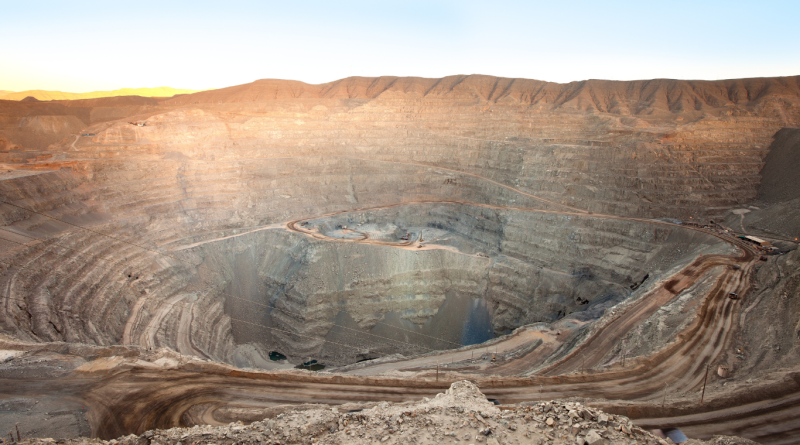Open-Pit Mining: The Top 3 Pros and Cons Explained
Open-pit mining is one of the most widely used methods in the mining industry today. Its popularity stems from its simplicity, high productivity, and cost efficiency. But with every advantage comes a set of challenges. This method reshapes landscapes, disrupts ecosystems, and often affects surrounding communities. In this article, we break down three key benefits and three significant drawbacks of open-pit mining.
What Is Open Pit Mining?
Open pit mining is a surface mining technique used to extract rocks and minerals close to the earth’s surface. Instead of digging tunnels, miners remove successive layers of soil and rock (called overburden), creating a large, stepped crater that deepens over time. These terraced pits, often visible from space, allow easy access to materials like copper, gold, iron, and coal. An open pit mine operates in phases, starting with site preparation, followed by drilling, blasting, hauling, and processing. Unlike underground mining, the open-air approach means large-scale machinery can work without spatial constraints. It’s a pro of surface mining that allows for faster, more economical extraction, particularly from low-grade deposits.
Pros of Open Pit Mining
1. Efficient Extraction of Resources
Open-pit mining delivers high throughput. The method supports rapid removal of ore across wide horizontal areas, which is particularly important for extracting low-grade mineral bodies.
At Bingham Canyon Mine in Utah, continuous expansion of the pit has enabled efficient copper extraction since the early 1900s. The mine spans nearly 4 kilometers in width and has reached depths exceeding one kilometer. Its terraced layout and massive scale demonstrate the logistical advantage of open access to ore bodies, allowing for uninterrupted drilling and hauling.
This level of operational efficiency is difficult to match using underground techniques. The open environment also allows for better monitoring of mineral composition at each level, reducing dilution and maximizing recovery rates.
2. Lower Costs Compared to Underground Mining
Cost reduction is a central advantage of open-pit mining. Projects using this method typically require less upfront capital for infrastructure and support fewer specialized systems, such as ventilation or underground water control.
At the Escondida copper mine in Chile, large-scale open-pit design enables streamlined logistics and lower production costs per ton. The mine’s layout supports use of ultra-class trucks and shovels, which haul high volumes of ore in fewer trips. The absence of underground constraints improves fuel efficiency and reduces the wear and tear on equipment.
Operationally, the ability to mine, load, and transport material without navigating confined spaces lowers manpower requirements and minimizes delay. These efficiencies help maintain profit margins even in volatile commodity markets.
3. Safer Working Environment
Open-pit mining significantly reduces health and safety risks compared to underground operations. The lack of subterranean tunnels eliminates dangers such as collapses, gas leaks, and limited access for emergency evacuation.
Australian mining operations, such as those in the Pilbara region of Western Australia, benefit from surface-based workflows that integrate autonomous haulage systems and drone-based monitoring. These innovations minimize direct human exposure to hazardous zones while enabling real-time safety oversight.
The open nature of pit operations allows for greater visibility, improved ventilation, and easier deployment of safety protocols. In comparison to deep shaft mining, this setup consistently reports lower accident and fatality rates across major mining jurisdictions.
Cons of Open Pit Mining
1. Severe Environmental Impact
Open-pit mining causes lasting ecological disruption. Clearing large tracts of land removes vegetation, alters topography, and contributes to erosion. The footprint of the pit, along with overburdened stockpiles, transforms natural landscapes into industrial zones.
The Grasberg Mine in Indonesia exemplifies this impact. Its development has led to significant deforestation and soil degradation across the surrounding area. Even after operations cease, the disturbed land often remains barren for decades unless significant rehabilitation is undertaken.
This form of surface mining also generates high volumes of waste rock, which can leach contaminants into nearby ecosystems. Restoration efforts are expensive and rarely return the environment to its original state.
2. Water Pollution and Drainage Problems
Exposing sulfide-rich rock to oxygen and moisture often triggers acid mine drainage. The resulting sulfuric acid mobilizes heavy metals, polluting nearby groundwater and surface water.
The Berkeley Pit in Montana is a legacy of this issue. Once an active open pit mine, the site now holds a toxic lake that continues to accumulate heavy metals and acids. Despite being inactive since the 1980s, it requires constant management to prevent contaminants from reaching local water sources.
Water treatment, containment structures, and ongoing monitoring add long-term environmental liabilities to the cost of open-pit operations.
3. Social Disruption and Community Displacement
Large-scale open-pit mines often require the relocation of communities situated near mineral deposits. Displacement affects housing, livelihoods, and access to resources, particularly in remote or underdeveloped regions.
In the Democratic Republic of the Congo, the expansion of open-pit mining operations for cobalt has led to forced resettlements. These relocations frequently result in reduced living standards and loss of income, especially for subsistence farmers and informal laborers.
While compensation may be offered, the social fabric of affected communities is often strained. Infrastructure development, economic alternatives, and cultural preservation are rarely prioritized once mining begins.
What is open pit mining good for?
It excels at large-scale extraction, keeps costs down, and improves safety conditions for workers. But these strengths come at a cost – ecological damage, pollution, and displacement.
Responsible mining operations must weigh these factors carefully. The pro of surface mining lies in productivity and economics. The cons lie in its lasting footprint on land, water, and people. Regulation, environmental planning, and ethical oversight are essential to ensure that benefits are not achieved at an irreversible cost.
